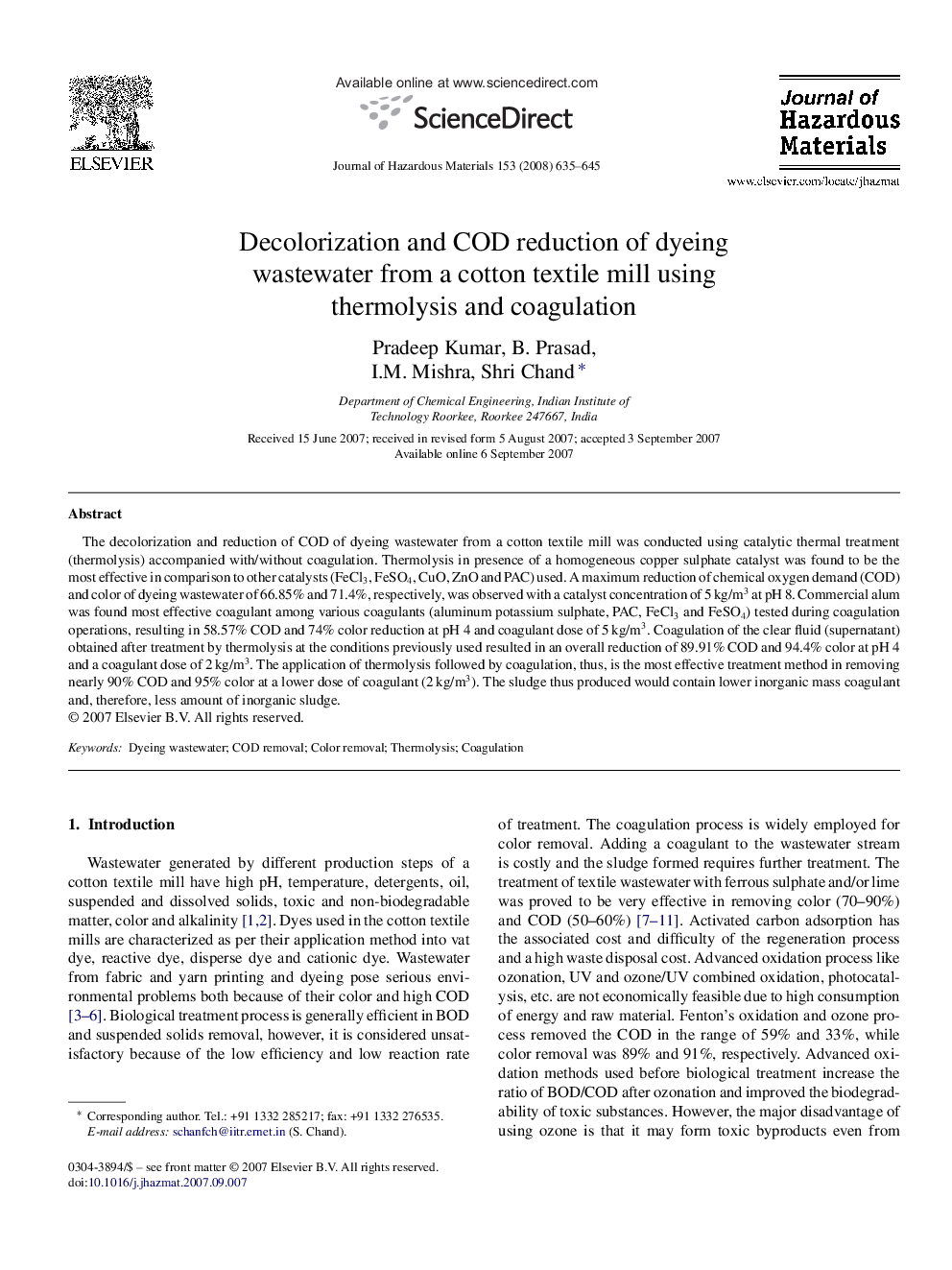| Article ID | Journal | Published Year | Pages | File Type |
|---|---|---|---|---|
| 583152 | Journal of Hazardous Materials | 2008 | 11 Pages |
Abstract
The decolorization and reduction of COD of dyeing wastewater from a cotton textile mill was conducted using catalytic thermal treatment (thermolysis) accompanied with/without coagulation. Thermolysis in presence of a homogeneous copper sulphate catalyst was found to be the most effective in comparison to other catalysts (FeCl3, FeSO4, CuO, ZnO and PAC) used. A maximum reduction of chemical oxygen demand (COD) and color of dyeing wastewater of 66.85% and 71.4%, respectively, was observed with a catalyst concentration of 5Â kg/m3 at pH 8. Commercial alum was found most effective coagulant among various coagulants (aluminum potassium sulphate, PAC, FeCl3 and FeSO4) tested during coagulation operations, resulting in 58.57% COD and 74% color reduction at pH 4 and coagulant dose of 5Â kg/m3. Coagulation of the clear fluid (supernatant) obtained after treatment by thermolysis at the conditions previously used resulted in an overall reduction of 89.91% COD and 94.4% color at pH 4 and a coagulant dose of 2Â kg/m3. The application of thermolysis followed by coagulation, thus, is the most effective treatment method in removing nearly 90% COD and 95% color at a lower dose of coagulant (2Â kg/m3). The sludge thus produced would contain lower inorganic mass coagulant and, therefore, less amount of inorganic sludge.
Related Topics
Physical Sciences and Engineering
Chemical Engineering
Chemical Health and Safety
Authors
Pradeep Kumar, B. Prasad, I.M. Mishra, Shri Chand,
